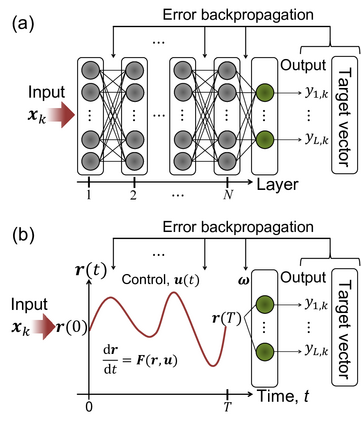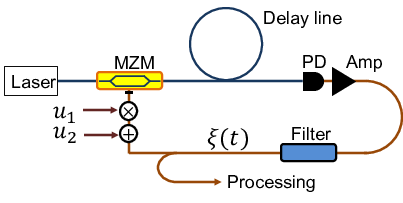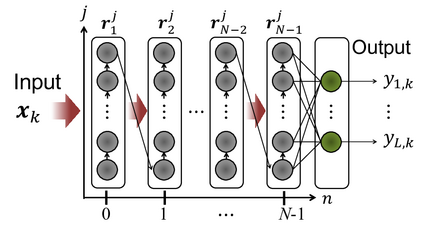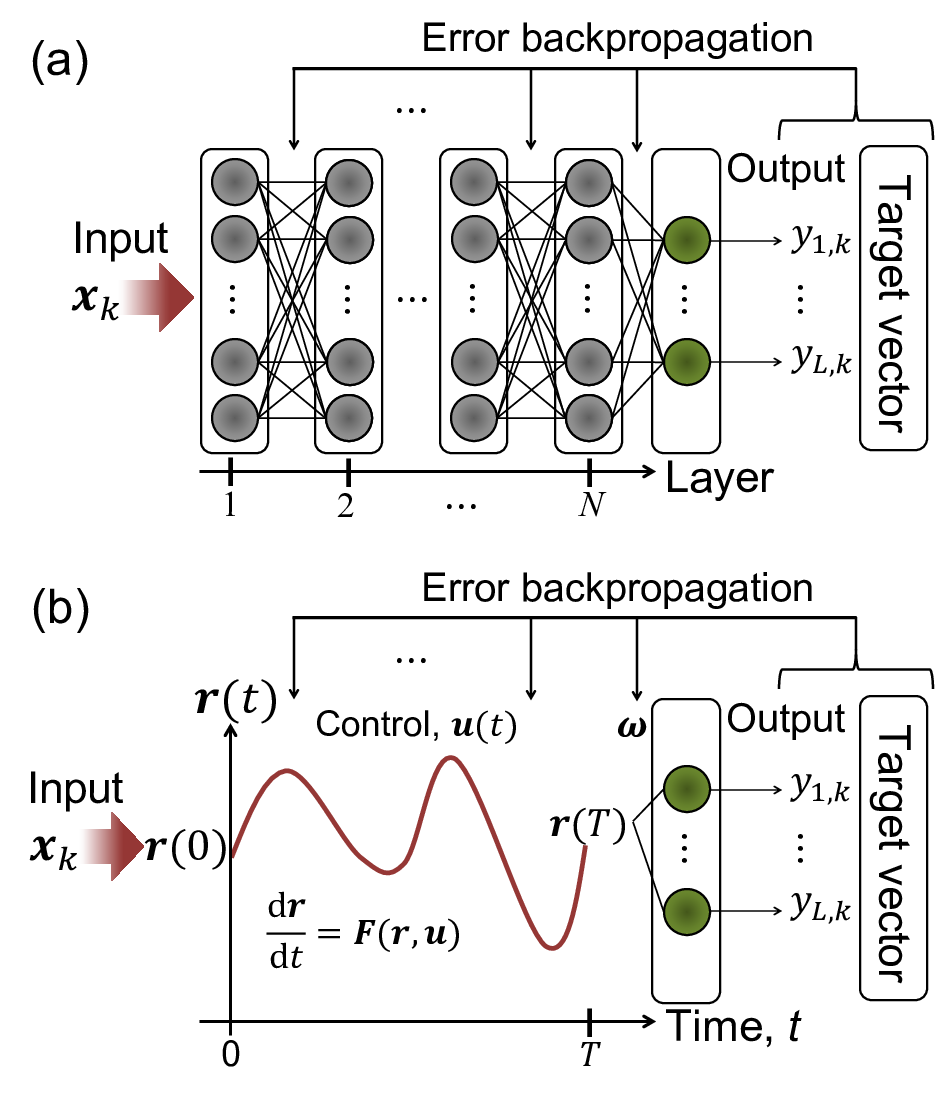A central topic in recent artificial intelligence technologies is deep learning, which can be regarded as a multilayer feedforward neural network. An essence of deep learning is the information propagation through the layers, suggesting a connection between deep neural networks and dynamical systems, in the sense that the information propagation is explicitly modeled by the time-evolution of dynamical systems. Here, we present a pattern recognition based on optimal control of continuous-time dynamical systems, which is suitable for physical hardware implementation. The learning is based on the adjoint method to optimally control dynamical systems, and the deep (virtual) network structures based on the time evolution of the systems can be used for processing input information. As an example, we apply the dynamics-based recognition approach to an optoelectronic delay system and show that the use of the delay system enables image recognition and nonlinear classifications with only a few control signals, in contrast to conventional multilayer neural networks which require training of a large number of weight parameters. The proposed approach enables to gain insight into mechanisms of deep network processing in the framework of an optimal control problem and opens a novel pathway to realize physical computing hardware.
翻译:最近人工智能技术的一个中心议题是深层次学习,这可以被视为多层向前神经网络。深层次学习的一个精髓是信息通过层层传播,表明深神经网络和动态系统之间的联系,即信息传播是动态系统时间演进所明确建模的信息传播。这里,我们展示了基于对连续时间动态系统最佳控制的模式承认,这适合于物理硬件的实施。学习的基础是优化控制动态系统的联合方法,以及基于系统时间演变的深(虚拟)网络结构可用于处理输入信息。举例来说,我们将基于动态的识别方法应用到一个opto电子延迟系统,并表明延迟系统的使用使得图像识别和非线性分类,只有少量的控制信号,与需要培训大量重量参数的常规多层神经网络形成对比。拟议方法有助于深入了解在最佳控制问题框架内的深度网络处理机制,并开启实现物理计算硬件的新路径。









